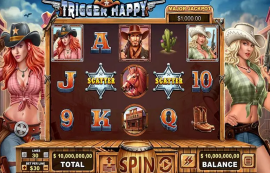
# The Evolution of Felix the Cat and Oswald the Lucky Rabbit
In the world of animated characters, few have captured the hearts of audiences quite like Felix the Cat and Oswald the Lucky Rabbit. Both characters not only played significant roles in the history of animation but also reflect the changing landscape of the entertainment industry in their respective eras. This article delves into their unique characteristics, impact on animation, and cultural significance.
## 1. The Origins of Felix the Cat
Felix the Cat, created by Pat Sullivan and Otto Messmer in the 1920s, emerged as one of the first animated cartoon stars. His charm lay in his mischievous grin and clever antics, often engaging in surreal adventures.
### 1.1 Early Years
Felix made his debut in *Feline Follies* (1919), exhibiting a range of emotions that resonated with audiences. He quickly became a sensation during the silent film era, starring in numerous short films characterized by inventive slapstick comedy.
### 1.2 Cultural Impact
Felix's influence extended beyond the screen, becoming a popular merchandise icon and paving the way for future animated characters. As the first animated character to gain such widespread recognition, Felix set the stage for the evolution of animation as an art form.
## 2. The Birth of Oswald the Lucky Rabbit
Created by Walt Disney and Ub Iwerks in 1927, Oswald the Lucky Rabbit was another groundbreaking character in the realm of animation. However, Oswald's story is intertwined with the complexities of early animation contracts and ownership issues.
### 2.1 Creative Beginnings
Oswald was initially developed as a mascot for Universal Pictures. His character was marked by a cheeky personality and a penchant for misadventures, much like Felix. Oswald's first short, *Trolley Troubles*, showcased his charming antics and quickly garnered attention.
### 2.2 The Loss of Oswald
Despite his popularity, Oswald was ultimately lost to Universal due to contractual disputes. This loss was a pivotal moment for Disney, leading to the creation of his most famous character, Mickey Mouse. Oswald's fate serves as a reminder of the mercurial nature of success in the entertainment industry.
## 3. Comparison Between Felix and Oswald
Both Felix and Oswald represent unique facets of early animation that shaped the industry:
### 3.1 Character Design
Felix, with his black body and white eyes, thrived in a world of magical realism, enabling him to navigate surreal environments effortlessly. In contrast, Oswald's character design was more streamlined, embodying a more traditional approach to animation.
### 3.2 Notable Differences
Notably, Felix was more aloof and whimsical, often bending the rules of logic in his adventures. Conversely, Oswald had a more relatable nature, facing challenges that mirrored everyday life, thus allowing audiences to connect with him on a personal level.
## 4. Legacy and Impact on Modern Animation
The legacies of Felix the Cat and Oswald the Lucky Rabbit continue to resonate in contemporary animation. their unique traits have paved the way for future characters by emphasizing humor, creativity, and emotional depth.
### 4.1 Influence on Future Creators
The playful and adventurous spirits of both characters have inspired modern animators, reminding them of the importance of storytelling combined with visual artistry. Their evolution signifies how animation can transcend generations, influencing new projects and creations along the way.
### 4.2 Cultural Relevance Today
Felix and Oswald's continued presence in popular culture—through reboots, merchandise, and museum exhibitions—demonstrates their lasting impact on the medium of animation. They serve as symbols of creativity and ingenuity, inspiring countless creators around the world.
In conclusion, Felix the Cat and Oswald the Lucky Rabbit remain enduring figures in the history of animation. Through setbacks and triumphs, these characters not only entertained audiences but also shaped the future of animated storytelling. Their legacies will likely inspire generations of animators to come.